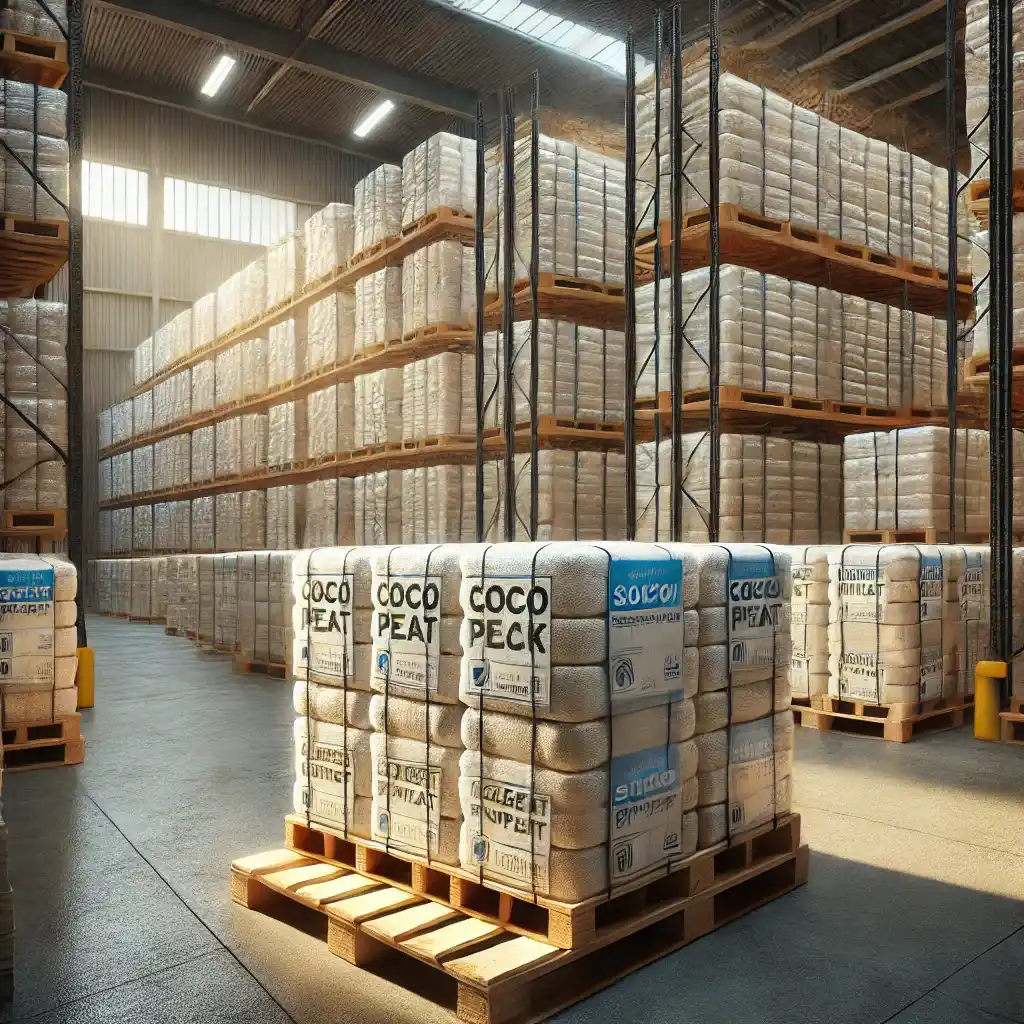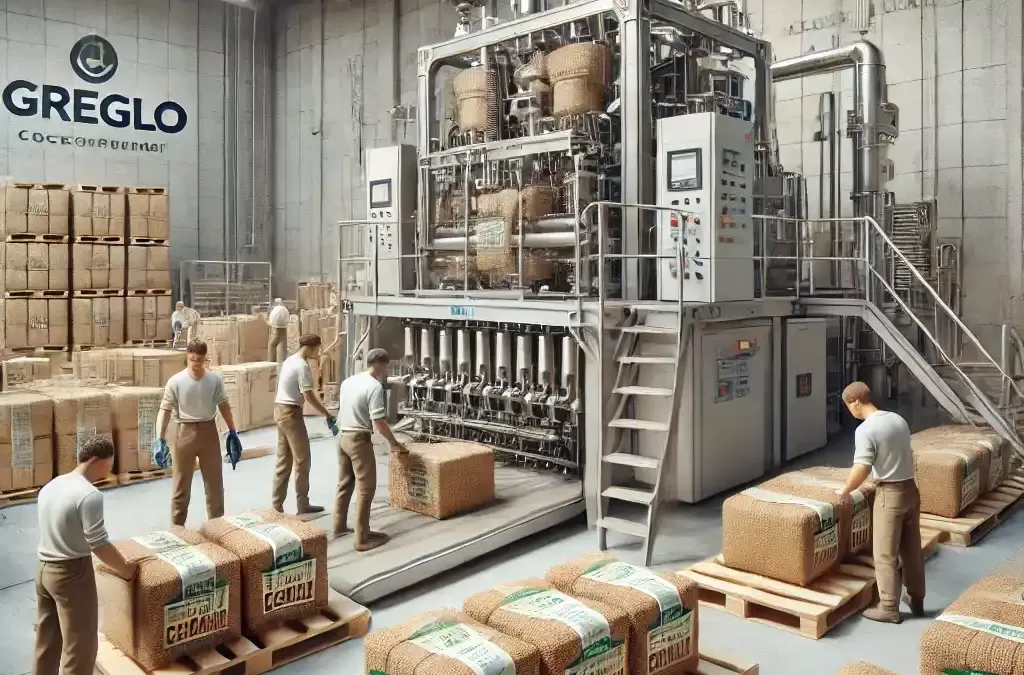Packaging is a critical step in delivering cocopeat to wholesale buyers in its best condition. Coco peat manufacturers and suppliers play a key role in ensuring that coir pith blocks, known for its exceptional water retention and soil aeration properties, is packaged properly to meet market standards. Widely used in gardening, hydroponics, and agriculture, this eco-friendly growing medium requires careful handling and high-quality cocopeat packaging to preserve its usability and durability. To meet the growing demand, these coir pith manufacturers, suppliers and exporters follow a systematic process of quality test to package cocopeat efficiently. Let’s explore how they achieve this, supported by real-world examples and useful data.
Why is Proper Cocopeat Packaging Important for manufacturers and suppliers?
As derived from coconut husks, it is a fragile product. It can absorb moisture easily or lose quality if not handled correctly. Proper packaging prevents contamination, ensures product durability during transportation, and preserves its usability. By investing in high-quality packaging methods, suppliers make cocopeat ready for both domestic and international buyers.
- Fact: The global cocopeat market was valued at $329 million in 2021 and is projected to grow at a CAGR of 8.2% from 2022 to 2030. This rising demand underscores the importance of efficient packaging.
Compressing Cocopeat to Reduce Bulk
Compression is the first step in packaging cocopeat for wholesale buyers. Suppliers compress the product to minimize its volume, making it easier and cheaper to transport.
- Hydraulic Compression Machines: Advanced machines compress loose coir pith into compact blocks or briquettes. For instance, Tamil Nadu-based exporters produce 5 kg blocks that expand to 70–75 liters when rehydrated. This high expansion ratio is one of the reasons why compressed cocopeat is a favorite among growers.
- Packaging Formats:
- 5 kg Blocks: Perfect for gardening, hydroponic farming, and large-scale agriculture.
- 650-gram Briquettes: Cocopeat 650g bricks suitable for retail buyers, wholesalers, or smaller applications.
- Grow Bags: Pre-filled with cocopeat and ready for planting in greenhouses.
Compression Benefits:
By compressing cocopeat, suppliers can fit approximately 22 metric tons of compressed cocopeat blocks into a 20-ft container, compared to just 8 metric tons of loose cocopeat.
Protecting Cocopeat from Moisture and Contamination
This growing medium is highly absorbent, so supply chains wrap it carefully to protect it during transport and storage.
- Moisture-Resistant Wrapping: Most exporters use durable materials like polypropylene (PP) bags or plastic wraps to shield the product from moisture and contamination.
- Heat-Sealed Packaging: Many manufactures and supply chains use heat-sealing to create airtight bags, reducing the risk of pests or environmental damage.
Example: Sri Lankan exporters use double-layered plastic wrapping, ensuring that cocopeat blocks arrive in pristine condition even after long journeys to Europe or North America. This practice reduces product spoilage rates by over 30% compared to single-layer packaging.
Labeling | Informative and Detailed
Clear labeling is essential for both compliance and customer convenience. Labels provide buyers with critical product details.
- What’s on the Label?
- Product weight (e.g., 5 kg or 650 grams).
- Expansion volume (e.g., 70 liters for 5 kg blocks).
- EC (Electrical Conductivity) levels, indicating the salt content. Low-EC cocopeat (less than 0.5 mS/cm) is preferred for hydroponics.
- pH levels, which usually range from 5.5 to 6.5 for healthy plant growth.
- Rehydration instructions for the buyer.
- Certifications: B2B Suppliers prominently display certifications such as ISO 9001, organic certifications, or Phytosanitary Certificates. These reassure buyers of the product’s compliance with global standards.
Insight: Research indicates that products with clear, detailed labeling are 35% more likely to be purchased by wholesalers compared to those without proper information.
Bulk Packaging for Large Orders
For wholesalers, bulk packaging is designed for efficient handling and transport.
- Palletized Packaging: Compressed cocopeat blocks are stacked on wooden pallets and shrink-wrapped for stability. A 20-ft container can hold up to 22 metric tons of compressed coco pith, making it cost-effective for shipping.
- Cartons or Woven Bags: Smaller briquettes or coco bricks and loose cocopeat are often packed in strong cartons or woven polypropylene bags to prevent spillage.
Real-World Example: India accounts for over 60% of global cocopeat exports. To cater to European markets, suppliers customize pallet sizes to meet warehouse regulations, ensuring smooth unloading and storage.
Ensuring Quality Before Cocopeat Packaging
Quality testing is a critical step before growing medium is packed for shipping.
- Key Tests:
- EC Levels: Coco pith is tested to ensure it has low salt content, which is crucial for hydroponics.
- pH Levels: Maintaining an optimal range (5.5–6.5) makes coir pith suitable for most plants.
- Expansion Ratio: Suppliers test how much it expands after rehydration. A high expansion ratio, such as 15 liters per kilogram, is considered premium quality.
- Certifications: Exporters ensure their coconut husk product meets international standards by obtaining Phytosanitary Certificates, which confirm that the product is free from pests.
Safe Storage and Efficient Shipping
After packaging, suppliers store cocopeat in dry, clean warehouses to maintain quality until it is shipped.
- Domestic Shipping: Trucks or trains deliver product to distributors within the country.
- International Shipping: For overseas buyers, coir pith is loaded into 20-ft or 40-ft containers and shipped via sea freight. Major importers include the USA, Australia, and the Netherlands.
Example: During peak seasons, Tamil Nadu-based suppliers export over 1 million 5 kg blocks monthly to meet the growing global demand for hydroponics.
Value-Added Packaging for Specific Needs
To meet unique buyer requirements, manufacturers offer value-added options:
- Blended Cocopeat: It is mixed with materials like perlite or vermiculite for specific agricultural applications.
- Private Branding: Buyers can request customized packaging with their branding and logos, which helps them market the product effectively.
- Grow Bags: These ready-to-use bags are a favorite among greenhouse growers.
Coco peat Manufacturers, Suppliers and Exporters follow a detailed and efficient process to package cocopeat for wholesale buyers. From compression to labeling and bulk shipping, every step ensures the product reaches buyers in optimal condition. India and Sri Lanka, two of the largest cocopeat exporters, have perfected this process to meet the demands of global markets. With the global cocopeat market projected to grow significantly, suppliers are innovating their packaging processes to cater to rising demand.
Whether you’re a small-scale retailer or a large distributor, understanding the packaging process helps you choose the right supplier for your needs. Choose wisely, and ensure your customers receive high-quality cocopeat that supports sustainable farming and gardening practices.


